Earlier this month, Apple ran performance tests on a pre-production 2.2GHz Intel Core 2 Duo-based MacBook and then compared the results to those of its original 2.0GHz Intel Core Duo-based MacBook introduced last year.
A similar series of tests were performed by the Cupertino-based company back in April on its 2.16GHz Core 2 Duo–based MacBook (introduced in May), the results of which were similarly compared to the original 2.0GHz Intel Core Duo-based MacBook.
In an iPhoto common application task — which involves importing 100 photos into an existing iPhoto library containing 2000 photos and then exporting those photos as a web page, a movie file, and preparing them for iDVD — the new 2.2GHz MacBook was 35 percent faster than the original 2.0GHz Intel Core Duo model, while the 2.16GHz MacBook introduced in May was just 25 percent faster.
A similar iTunes application test — which measures the speed of importing a song from the hard drive to the iTunes library, encoding a video clip for iPod, and encoding 60 minutes of music and burning it to a CD — showed the new 2.2GHz MacBook to have a 6 percent edge over previous-generation 2.16GHz MacBook.
Apple's new 2.2GHz MacBook vs. original 2.0GHz MacBook Core Duo
Apple also tested the new 2.2GHz MacBook under several other iLife applications, but altered those tests since April, making any comparison inconclusive. It should also be noted that iLife itself has been upgraded since both previous benchmarks were conducted, though Apple made no mention of this fact in its test results.
 Slash Lane
Slash Lane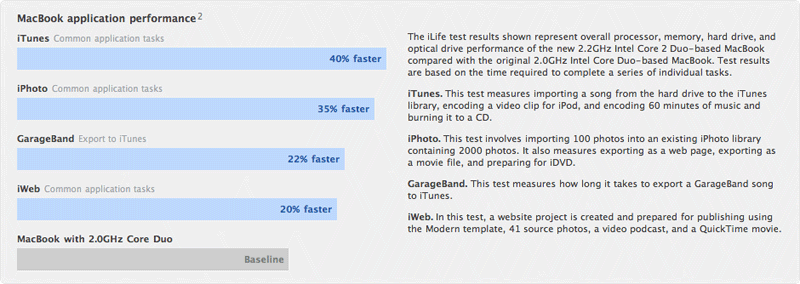
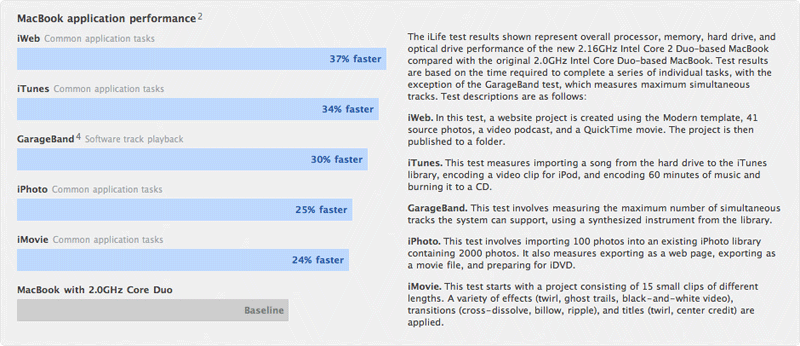




-xl-m.jpg)


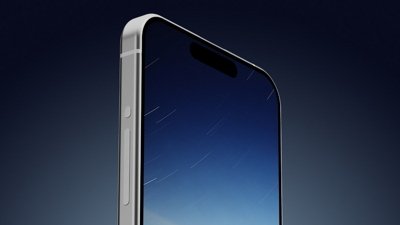
 William Gallagher
William Gallagher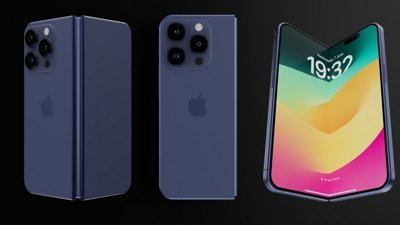
 Amber Neely
Amber Neely
 Andrew Orr
Andrew Orr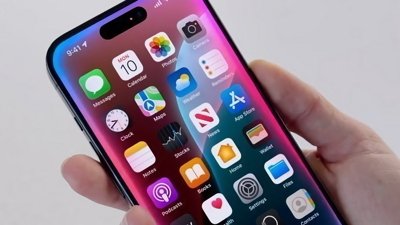



 Christine McKee
Christine McKee
 Chip Loder
Chip Loder








45 Comments
Nice ... these things will sell like hotcakes this holiday season.
I'm still waiting for a redesign :P
Since we're talking about the same processor family the speed differences are pretty easy to ascertain. You have clockspeed and a FSB advantage.
What's important is finding out how much faster and more full featured the GMA X3100 chipset is. That's what I keenly wait for.
Were the first ones done using Tiger, and the latter ones using Leopard?
Also with percentage improvements you can't just subtract numbers, e.g., 135% faster - 125% faster = 10% faster.
But yes, it is going to be faster. It's 33MHz faster, the bus speed is 133MHz faster (= more memory bandwidth). The graphics are faster, where relevant, and the OS is faster, where relevant.
Were the first ones done using Tiger, and the latter ones using Leopard?
Also with percentage improvements you can't just subtract numbers, e.g., 135% faster - 125% faster = 10% faster.
But yes, it is going to be faster. It's 33MHz faster, the bus speed is 133MHz faster (= more memory bandwidth). The graphics are faster, where relevant, and the OS is faster, where relevant.
you can go upto 4GB where as the previous one 2GB limit, that way it will be faster if you have more RAM.